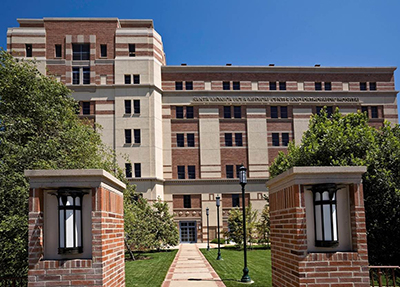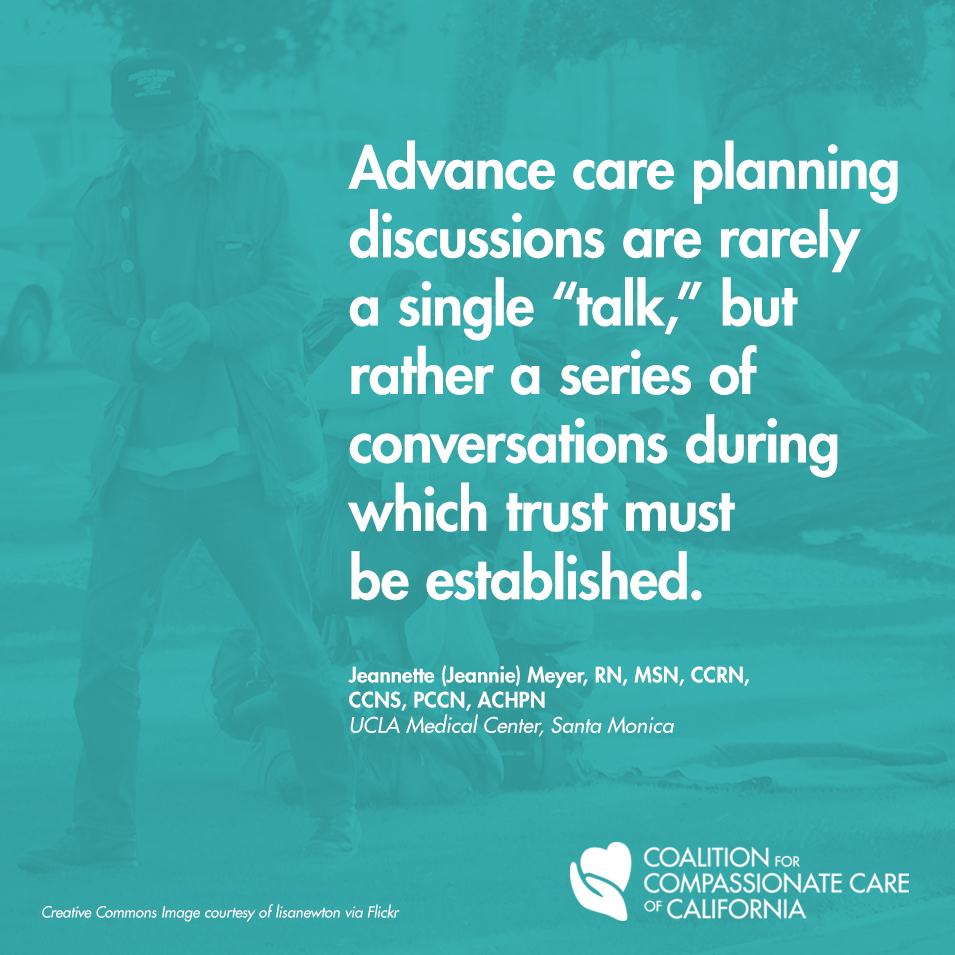UCLA Medical Center Pilots Strategies for Having End-of-Life Conversations with Homeless Community in Santa Monica
He wanted no part of anything we could offer.
His long, unkempt gray hair and rough beard made him look much older than his stated age, in the mid-50s. Within arm’s reach were plastic bags which held all of his belongings.
Richard (not his real name) arrived at the hospital emergency room in respiratory distress and learned he had metastatic lung cancer. We told him there was potential for treatment that might prolong his life and we could run further diagnostics. We provided him information on palliative care and told him we could manage his symptoms.
He cut us off.
His speech was very clear, and laced with expletives. Yes, he recognized that he had cancer. Yes, he realized he would die, and would likely die sooner unless he accepted disease-modifying treatment.
But Richard didn’t want to be in a hospital, or a doctor’s office, or a nursing home. And, heaven forbid, he did not want to be in an ICU.
He wanted to go home.
For Richard, “home” was the street. His home offered him freedom, liberties and fresh air, and a park where he and his friends could meet, drink and smoke until the police urged them to leave. His home provided him with a community.
He missed home, so Richard signed himself out AMA—against medical advice.
What Happens When the Homeless Leave the Hospital?
We don’t know what happens to people like Richard when they leave our hospital. He may be found dead on the streets, a fate Richard was comfortable with. He may become more ill and be admitted to one of the other hospitals in our area. He may be placed on life support with a ventilator and critical care medications. He may be sent to a long-term care facility. He may receive the very treatments he already shared he did not want to have.

What bothers me and my colleagues at
UCLA Medical Center, Santa Monica, is we feel like we could have done something to help his wishes be known to other hospitals and community organizations; however, we do not have a format in which we can communicate the care wishes of our homeless population.
Community Advance Care Planning, for Those Without a Home Address
Richard’s case is not uncommon. Geographically, Santa Monica is homeless-friendly, with a temperate climate and a variety of community resources such as shelters, outreach programs and clinics.
A few months ago, my team responded to a call from the Coalition for Compassionate Care of California (CCCC) for ideas to develop
innovative community advance care planning (ACP) pilot programs within the state of California. The program was made possible through a grant from the
California HealthCare Foundation.
We proposed our dream idea—to create an ACP program and registry for Santa Monica’s homeless community—and submitted it to CCCC. We knew it was a lofty goal, but one that is much needed in Santa Monica and surrounding communities in the greater Los Angeles area.
As luck would have it, we were chosen to participate in the program.
Advance Care Planning Pilot Program for the Homeless: Challenges and Solutions
At our hospital we began tracking the number of homeless individuals who seek help in our emergency room, and with support from the ER team we are developing an initiative to record their advance care plans.
We soon realized that in order for the care wishes of the homeless to be honored at the end of life we must develop strong connections with organizations outside of our hospital. We partnered with other hospitals in the area, clinics, shelters, and homeless outreach programs. We are providing them with education about the importance of advance care planning and are answering many, many questions.
We’ve come to realize that, unless a patient is admitted, completing an advance directive within the hospital setting is challenging. Many homeless patients are in no state to have advance care planning conversations in the emergency room, and they often come in at night when our small advance care team is not available. ACP discussions are rarely a single “talk,” but rather a series of conversations during which trust must be established.

Advance care planning discussions are rarely a single "talk..."
One potential solution we discovered involves inviting participants from shelters and outreach programs to learn how to have advance care planning discussions so that they—the people trusted by the homeless community—can facilitate and capture their end-of-life care wishes.
Our greatest challenge is finding a way to share advanced directives and
POLST forms with community organizations. We are in discussion with the
National Health Foundation—a nonprofit that addresses the health concerns of the underserved—to explore possibilities of collaborating with databases already in existence in order to include space and access for community organizations and hospitals to view the advance care planning documents.
The work is extensive, and the barriers formidable. But we know the rewards could be endless as we work to provide this vulnerable population with the same dignity and voice offered to all people.
Jeannette (Jeannie) Meyer, RN, MSN, CCRN, CCNS, PCCN, ACHPN, is a clinical nurse specialist in palliative care at the Santa Monica UCLA Medical Center and Orthopedic Hospital, and an assistant clinical professor at the UCLA School of Nursing.
The Advance Care Planning Coalition at the UCLA Medical Center, Santa Monica also includes Delia Cortez, LCSW, Lori Koutouratsas, MDiv, and Diana Ramirez.
Learn more about
CCCC’s Advance Care Planning initiative.